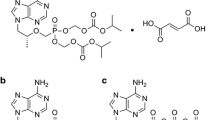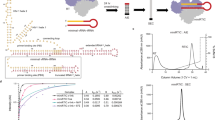Abstract
Human immunodeficiency virus-1 reverse transcriptase (HIV-1 RT) is considered to be one of the key targets for antiviral drug therapy. The emergence of the aptamers as potential inhibitors against HIV-1 reverse transcriptase has attracted the attention of the scientific community because these macromolecules can effectively inhibit HIV-1 RT with between micromolar to picomolar concentrations. However, it is not clear how aptamers interact with HIV-1 RT. We have undertaken a molecular dynamics (MD) study in order to gain a keen insight into the conformational dynamics of HIV-1 RT on the formation of a complex with an aptamer or DNA substrate. We have therefore employed three separate models: apo HIV-1 RT, HIV-1 RT with a bound RNA aptamer, and HIV-1 RT with a bound DNA substrate. The results show that HIV-1 RT complex with an aptamer was more stable than that with DNA substrate. It was found that the aptamer interacted with HIV-1 RT in a fingers-and-thumb-closed conformation, at the bound at the nucleic acid substrate binding site. We identified key residues within the HIV-1 RT-aptamer complex in order to help design, develop, and test a new aptamer based on therapies in the future.








Similar content being viewed by others
References
Menendez-Arias L (2010) Molecular basis of human immunodeficiency virus drug resistance: an update. Antivir Res 85(1):210–231
Jacobo-Molina A, Ding J, Nanni RG, Clark AD Jr, Lu X, Tantillo C, Williams RL, Kamer G, Ferris AL, Clark P et al (1993) Crystal structure of human immunodeficiency virus type 1 reverse transcriptase complexed with double-stranded DNA at 3.0-Å resolution shows bent DNA. Proc Natl Acad Sci U S A 90(13):6320–6324
Yazdanpanah Y, Sissoko D, Egger M, Mouton Y, Zwahlen M, Chene G (2004) Clinical efficacy of antiretroviral combination therapy based on protease inhibitors or non-nucleoside analogue reverse transcriptase inhibitors: indirect comparison of controlled trials. Brit Med J 328(7434):249–253
Tuerk C, MacDougal S, Gold L (1992) RNA pseudoknots that inhibit human immunodeficiency virus type 1 reverse transcriptase. Proc Natl Acad Sci U S A 89(15):6988–6992
Burke DH, Scates L, Andrews K, Gold L (1996) Bent pseudoknots and novel RNA inhibitors of type 1 human immunodeficiency virus (HIV-1) reverse transcriptase. J Mol Biol 264(4):650–666
Schneider DJ, Feigon J, Hostomsky Z, Gold L (1995) High-affinity ssDNA inhibitors of the reverse transcriptase of type 1 human immunodeficiency virus. Biochemistry 34(29):9599–9610
Chaloin L, Lehmann MJ, Sczakiel G, Restle T (2002) Endogenous expression of a high-affinity pseudoknot RNA aptamer suppresses replication of HIV-1. Nucleic Acids Res 30(18):4001–4008
Held DM, Kissel JD, Thacker SJ, Michalowski D, Saran D, Ji JF, Hardy RW, Rossi JJ, Burke DH (2007) Cross-clade inhibition of recombinant human immunodeficiency virus type 1 (HIV-1), HIV-2, and simian immunodeficiency virus SIVcpz reverse transcriptases by RNA pseudoknot aptamers. J Virol 81(10):5375–5384
Joshi P, Prasad VR (2002) Potent inhibition of human immunodeficiency virus type 1 replication by template analog reverse transcriptase inhibitors derived by SELEX (systematic evolution of ligands by exponential enrichment). J Virol 76(13):6545–6557
Joshi PJ, North TW, Prasad VR (2005) Aptamers directed to HIV-1 reverse transcriptase display greater efficacy over small hairpin RNAs targeted to viral RNA in blocking HIV-1 replication. Mol Ther 11(5):677–686
Jaeger J, Restle T, Steitz TA (1998) The structure of HIV-1 reverse transcriptase complexed with an RNA pseudoknot inhibitor. EMBO J 17(15):4535–4542
Ditzler MA, Bose D, Shkriabai N, Marchand B, Sarafianos SG, Kvaratskhelia M, Burke DH (2011) Broad-spectrum aptamer inhibitors of HIV reverse transcriptase closely mimic natural substrates. Nucleic Acids Res 39(18):8237–8247
Kensch O, Connolly BA, Steinhoff HJ, McGregor A, Goody RS, Restle T (2000) HIV-1 reverse transcriptase-pseudoknot RNA aptamer interaction has a binding affinity in the low picomolar range coupled with high specificity. J Biol Chem 275(24):18271–18278
Held DM, Kissel JD, Patterson JT, Nickens DG, Burke DH (2006) HIV-1 inactivation by nucleic acid aptamers. Front Biosci 11:89–112
Kensch O, Restle T, Wohrl BM, Goody RS, Steinhoff HJ (2000) Temperature-dependent equilibrium between the open and closed conformation of the p66 subunit of HIV-1 reverse transcriptase revealed by site-directed spin labelling. J Mol Biol 301(4):1029–1039
Bebenek K, Beard WA, Darden TA, Li L, Prasad R, Luton BA, Gorenstein DG, Wilson SH, Kunkel TA (1997) A minor groove binding track in reverse transcriptase. Nat Struct Biol 4(3):194–197
Li L, Pedersen L, Beard W, Bebenek K, Wilson S, Kunkel T, Darden T (2000) A molecular dynamics model of HIV-1 reverse transcriptase complexed with DNA: comparison with experimental structures. Mole Model Ann 6(10–11):575–586
Ivetac A, McCammon JA (2009) Elucidating the inhibition mechanism of HIV-1 non-nucleoside reverse transcriptase inhibitors through multicopy molecular dynamics simulations. J Mol Biol 388(3):644–658
Hsiou Y, Ding J, Das K, Clark AD Jr, Hughes SH, Arnold E (1996) Structure of unliganded HIV-1 reverse transcriptase at 2.7-Å resolution: implications of conformational changes for polymerization and inhibition mechanisms. Structure 4(7):853–860
Lansdon EB, Samuel D, Lagpacan L, Brendza KM, White KL, Hung M, Liu X, Boojamra CG, Mackman RL, Cihlar T, Ray AS, McGrath ME, Swaminathan S (2010) Visualizing the molecular interactions of a nucleotide analog, GS-9148, with HIV-1 reverse transcriptase-DNA complex. J Mol Biol 397(4):967–978
Guex N, Peitsch MC (1997) SWISS-MODEL and the Swiss-PdbViewer: an environment for comparative protein modeling. Electrophoresis 18(15):2714–2723
Bauman JD, Das K, Ho WC, Baweja M, Himmel DM, Clark AD Jr, Oren DA, Boyer PL, Hughes SH, Shatkin AJ, Arnold E (2008) Crystal engineering of HIV-1 reverse transcriptase for structure-based drug design. Nucleic Acids Res 36(15):5083–5092
Sali A, Blundell TL (1993) Comparative protein modelling by satisfaction of spatial restraints. J Mol Biol 234(3):779–815
Hornak V, Abel R, Okur A, Strockbine B, Roitberg A, Simmerling C (2006) Comparison of multiple amber force fields and development of improved protein backbone parameters. Protein Struct Funct Bioinform 65(3):712–725
Jorgensen WL, Chandrasekhar J, Madura JD, Impey RW, Klein ML (1983) Comparison of simple potential functions for simulating liquid water. J Chem Phys 79(2):926–935
Van der Spoel D, Lindahl E, Hess B, Groenhof G, Mark AE, Berendsen HJC (2005) GROMACS: Fast, flexible, and free. J Comput Chem 26(16):1701–1718
Pronk S, Pall S, Schulz R, Larsson P, Bjelkmar P, Apostolov R, Shirts MR, Smith JC, Kasson PM, van der Spoel D, Hess B, Lindahl E (2013) GROMACS 4.5: a high-throughput and highly parallel open source molecular simulation toolkit. Bioinformatics 29(7):845–854
Sorin EJ, Pande VS (2005) Exploring the helix-coil transition via all-atom equilibrium ensemble simulations. Biophys J 88(4):2472–2493
DePaul AJ, Thompson EJ, Patel SS, Haldeman K, Sorin EJ (2010) Equilibrium conformational dynamics in an RNA tetraloop from massively parallel molecular dynamics. Nucleic Acids Res 38(14):4856–4867
Lindorff-Larsen K, Piana S, Palmo K, Maragakis P, Klepeis JL, Dror RO, Shaw DE (2010) Improved side-chain torsion potentials for the Amber ff99SB protein force field. Proteins 78(8):1950–1958
Yang L, Tan CH, Hsieh MJ, Wang J, Duan Y, Cieplak P, Caldwell J, Kollman PA, Luo R (2006) New-generation amber united-atom force field. J Phys Chem B 110(26):13166–13176
Berendsen HJC, Postma JPM, van Gunsteren WF, DiNola A, Haak JR (1984) Molecular dynamics with coupling to an external bath. J Chem Phys 81(8):3684–3690
Bussi G, Donadio D, Parrinello M (2007) Canonical sampling through velocity rescaling. J Chem Phys 126(1):014101
Nosé S, Klein ML (1983) Constant pressure molecular dynamics for molecular systems. Mol Phys 50(5):1055–1076
Parrinello M, Rahman A (1981) Polymorphic transitions in single crystals: a new molecular dynamics method. J Appl Phys 52(12):7182–7190
Hess B, Bekker H, Berendsen HJC, Fraaije JGEM (1997) LINCS: a linear constraint solver for molecular simulations. J Comput Chem 18(12):1463–1472
Darden T, York D, Pedersen L (1993) Particle mesh Ewald: an N⋅log (N) method for Ewald sums in large systems. J Chem Phys 98(12):10089–10092
Essmann U, Perera L, Berkowitz ML, Darden T, Lee H, Pedersen LG (1995) A smooth particle mesh Ewald method. J Chem Phys 103(19):8577–8593
van der Spoel D, Lindahl E, Hess B, van Buuren AR, Apol E, Meulenhoff PJ, Tieleman DP, Sijbers ALTM, Feenstra KA, van Drunen R, Berendsen HJC (2010) Gromacs User Manual version 4.5.4
Amadei A, Linssen AB, Berendsen HJ (1993) Essential dynamics of proteins. Proteins 17(4):412–425
Spiliotopoulos D, Spitaleri A, Musco G (2012) Exploring PHD Fingers and H3K4me0 Interactions with Molecular Dynamics Simulations and Binding Free Energy Calculations: AIRE-PHD1, a Comparative Study. PLoS One 7(10). doi:10.1371/journal.pone.0046902
Kumari R, Kumar R, Lynn A (2014) g_mmpbsa—A GROMACS Tool for High-Throughput MM-PBSA Calculations. Journal of Chemical Information and Modeling. doi:10.1021/ci500020m
Kollman PA, Massova I, Reyes C, Kuhn B, Huo S, Chong L, Lee M, Lee T, Duan Y, Wang W, Donini O, Cieplak P, Srinivasan J, Case DA, Cheatham TE 3rd (2000) Calculating structures and free energies of complex molecules: combining molecular mechanics and continuum models. Acc Chem Res 33(12):889–897
Baker NA, Sept D, Joseph S, Holst MJ, McCammon JA (2001) Electrostatics of nanosystems: application to microtubules and the ribosome. Proc Natl Acad Sci U S A 98(18):10037–10041
Turner PJ (2008) Grace. Center for Coastal and Land-Margin Research Oregon Graduate Institute of Science and Technology. http://plasma-gate.weizmann.ac.il/Grace/.
DeLano WL (2010) The PyMOL Molecular Graphics System, Version 1.3r1. Schrödinger, LLC
Humphrey W, Dalke A, Schulten K (1996) VMD: visual molecular dynamics. J Mol Graph 14(1):33–38, 27–38
Madrid M, Lukin JA, Madura JD, Ding JP, Arnold E (2001) Molecular dynamics of HIV-1 reverse transcriptase indicates increased flexibility upon DNA binding. Protein-Struct Funct Genet 45(3):176–182
Wright DW, Hall BA, Kellam P, Coveney PV (2012) Global Conformational Dynamics of HIV-1 Reverse Transcriptase Bound to Non-Nucleoside Inhibitors. Biol (Basel) 1(2):222–244. doi:10.3390/biology1020222
Acknowledgments
This work was supported by the Higher Education Research Promotion and National Research University Project of Thailand, Office of the Higher Education Commission, Faculty of Science at Kasetsart University, Kasersart University Research and Development Institute. We wish to express our gratitude for the use of high-performance computer clusters from The National Center for Genetic Engineering and Biotechnology (BIOTEC) and the National Science and Technology Development Agency (NSTDA).
Author information
Authors and Affiliations
Corresponding author
Electronic supplementary material
Below is the link to the electronic supplementary material.
ESM 1
(DOCX 15280 kb)
Rights and permissions
About this article
Cite this article
Aeksiri, N., Songtawee, N., Gleeson, M.P. et al. Insight into HIV-1 reverse transcriptase–aptamer interaction from molecular dynamics simulations. J Mol Model 20, 2380 (2014). https://doi.org/10.1007/s00894-014-2380-8
Received:
Accepted:
Published:
DOI: https://doi.org/10.1007/s00894-014-2380-8




